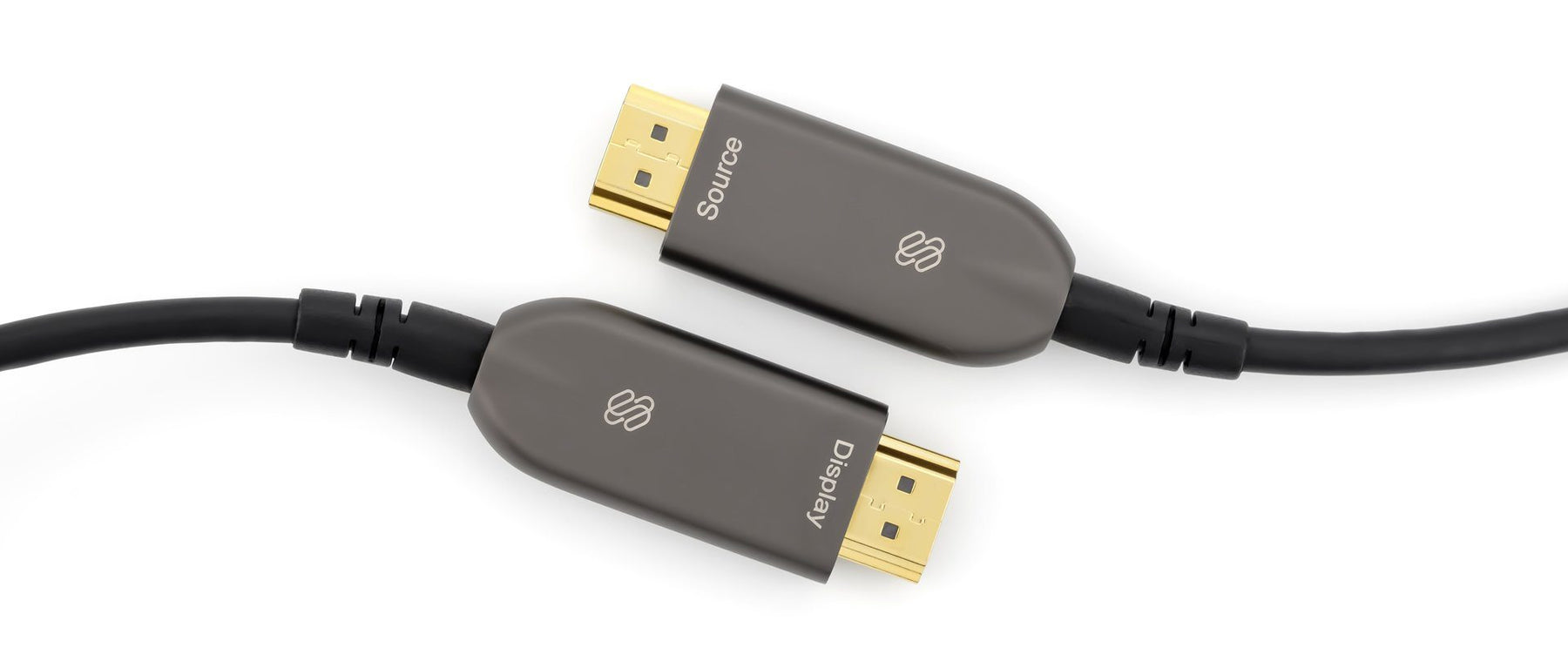
Differences Between Low and High-End HDMI Cables
To say that there's no difference between low-end and high-end HDMI cables is like saying that all oranges are the same. In truth, some oranges are sweeter than others.
When it comes to HDMI cables, some perform better than others, while some don't even work right out of the package – regardless if they are low-end or high-end.
Debunking the myth that premium-priced HDMI cables perform better than cheap ones, most would say that low-end HDMI cables are precisely the same as their high-end counterparts. The truth is, you won't find much difference unless you delve deeper. While it's not sensible to buy an unnecessarily expensive cable, it's not a good idea to randomly pick a cheap one either.
The best way to understand the real difference between low and high-end versions is to have a deeper insight into what an HDMI cable does. Clearing the misconceptions is also crucial to help pick between both types of HDMI cables.
How Does HDMI Help?
Before HDMI became available, televisions' screen size was almost square – with an aspect ratio of 4:3. The images shown could only be in standard definition format due to audio/video and composite cables' nature.
With the introduction of HDMI cables, transferring signals became digital. The pictures shown on televisions are now rectangular and widescreen, with an aspect ratio of 16:9. The most recent HDMI 2.1 specifications also increased the maximum supported resolution up to 10k. Even the audio output can now be lossless and has theater-like quality.
Aside from better picture and sound quality, other advantages of HDMI include:
- Fewer external configurations: HDMI offers two-way communication between devices. Components can identify and automatically configure the best resolution for you.
- Supports device authentication: The digital signals sent through an HDMI cable allow authentication between devices.
- There's no degradation in quality: HD signals don't require compression. Thus, avoiding quality loss during transmission.
- Support for Dolby/DTS: Audio streams are of the highest quality since HDMI 2.1 now supports DTS Master, DTS:X, Dolby TrueHD, Dolby Atmos and more.
While HDMI & A/V cables both deliver picture and sound, their deviations are apparent. With HDMI, images have better colors and are more realistic. The sound has a higher fidelity, resulting in crisp and clear quality.
What Myths Surround HDMI Cables?
Buying HDMI cables used to be simple: you pick one from the few choices on the store's shelves. However, the misinformation surrounding this technology made choosing an HDMI cord more complicated.
Here are some of the myths:
- Premium HDMI cables work well regardless of distance: Most premium packages show features that highlight how well they work in longer lengths. Regardless of the materials used, all copper cables are less reliable as the distance increases, it's how physics works.
- The higher the cost, the better the picture and audio quality: Manufacturers who had their products certified have to make their cables more expensive to cover the cost. However, certification applies to specific cable lengths only. They may receive it for a two-meter HDMI, but not for longer ones.
- Cheap cables offer poor quality: Cheaper HDMI cables can work as well as as premium ones in some circumstances.
- Premium HDMI cables can boost your quality: You can't push the picture quality beyond the connected devices' capabilities.
Do Pricier HDMI Cables Really Make a Difference?
With the myths now debunked, it's time to know the truth. Can a very expensive HDMI cable show a better picture and sound quality than a cheaper one?
The quick answer is no.
An HDMI cable, regardless of the materials used, can either transmit a signal or not – there's no in-between. An expensive HDMI doesn't produce richer colors or crisper sound than cheaper versions.
However, an HDMI cable made with better materials can be more durable, and support higher bandwidth at longer distances, but it won't offer any difference with the picture quality.
Other benefits for higher-priced HDMI cables different can be:
- Better connectors
- More flexible materials
- Lower chance of failure or defects
- Look and feel of the cable
- Confidence that they will support the advertised bandwidth
In the end, while both cheap and costly HDMI cables offer the same audio and video quality, a pricier one can provide more durability and reliability.
Does a 4k HDMI Cord Improve Audio and Video Quality?
Whether certified or not, HDMI cables work equally in transmitting audio and video in high definition. Furthermore, the "advanced features" that some manufacturers promote are primarily dependent on the equipment's capabilities on either end of the cable.
A 4K HDMI does not improve audio and video quality better than other compatible non-4k ones. As long as the cable can accommodate the bandwidth required to show 4k content, you're good to go.
An HDMI cable only transmits signals. It doesn't make the audio and video quality better than your TV or other devices' capabilities.
Choosing Between Low and High-End HDMI Cables
When choosing HDMI cables, it all boils down to how much bandwidth your equipment requires for the resolution you need to send, and how long you need the cable to be.
We highly recommend taking the time to research how much bandwidth your equipment is capable of, and getting a cable to match.
For distances longer than the specified HDMI specs for copper cables, we recommend Fiber Optic Cables like the Light-Link 4k HDMI 2.0 cables which support 4k resolutions up to 300 ft. or if you need 8k, the Light-Link 8k HDMI 2.1 Cables can support 8k up to 100 ft.
If you don't want to take risks, go with Sewell for affordable, high-quality HDMI cables. For additional help determining which cable you need, feel free to contact us.
